After you research your pay-per-click ad campaign’s keywords, your job’s far from over. You can’t just slap some keywords on your ad and call it a day.
Imagine you’re scrolling through your search results and social feed, and you come across an ad that says:
Tropical vacation
Best Island vacation
Tropical vacation packages
You’re not gonna click on that ad, right? What’s it even for? It might make a good haiku if you switch some of the syllables around, but that’s about it.
Instead, you’ve gotta write copy that encourages visitors to click. But how do you craft ad copy that sells? Let’s talk about why ad copy matters and how you can draw in more customers with it.
Why Ad Copy Matters
Your ad’s design grabs a person’s attention, but it’s up to the copy to convince them to click.
Plenty of folks who browse ads are still deciding how they feel about different brands on the market. Ninety percent of mobile searchers still aren’t sure what brand they want to buy from— that’s why they’re searching. Your ad copy allows you to make a lasting impression on potential customers.
Plus, the better your ad copy, the less you’ll pay for your cost-per-action (CPA). CPA is the amount it costs to get someone to do something with an ad.
Google AdWords’ average CPA is $48.96 for search and $75.51 for display, while Facebook Ads have an average CPA of $19.68. But when you encourage visitors to take action with your ad copy, you can crank those prices down. That means less money spent from your marketing budget and more money in your pockets.
How to Nail Your Ad Copy
Here are four strategies for you to write ad copy that convinces viewers to take action. For consistency’s sake, let’s look at examples from the same platform—Facebook Ads, but this advice will apply to any ad platform you use.
One more note before you dig in: Know what ad visuals and platform you’ll use before you write copy. Then, apply these tips so they match your design and platform.
1. Get down to business
Ad copy’s gotta stay direct and to the point because you only have so much room to make an impression.
The most popular ad platforms keep their text limits short. Google Search Ads have a headline limit of 30 characters and a 90-character description limit. Facebook recommends keeping your Facebook and Instagram feed ads to a 40-character headline and 125-character primary text.
In one of the most extreme examples, Google Shopping Ads keep their text length as brief as possible:
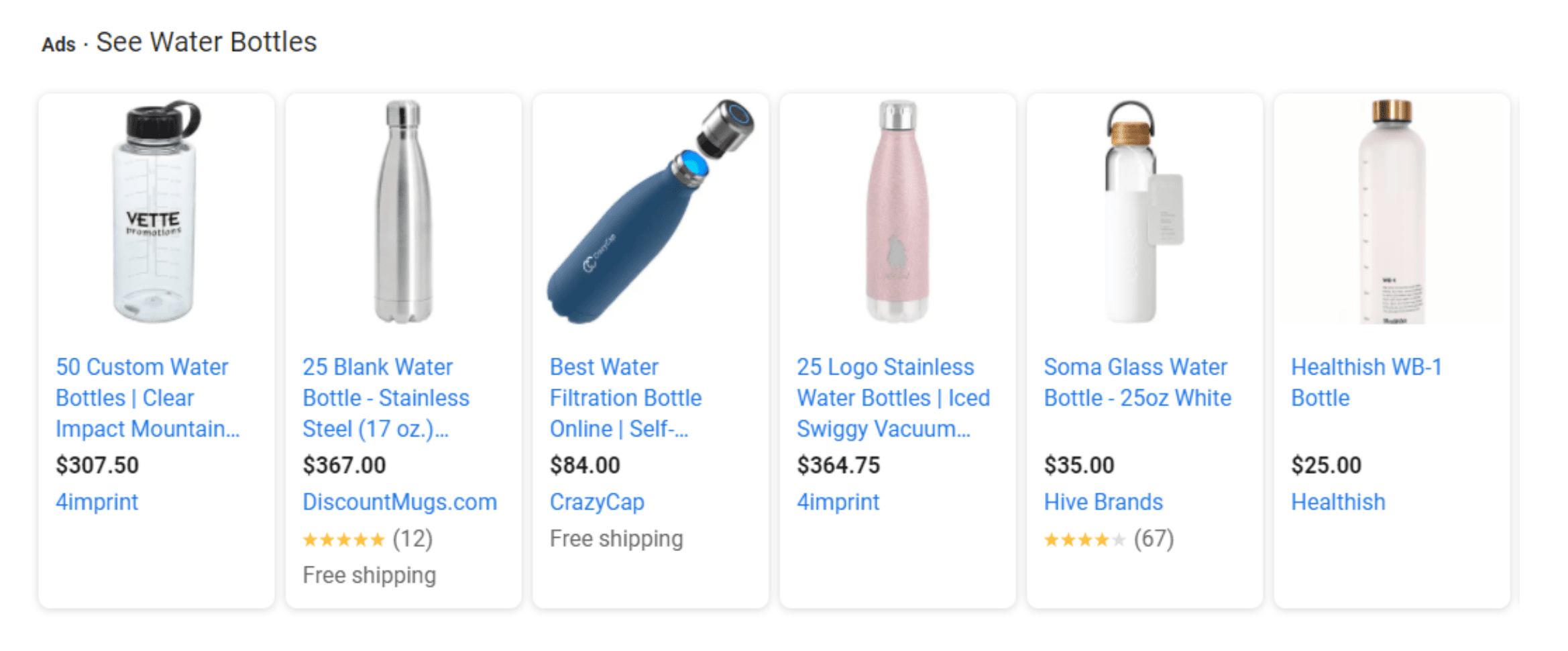
So, if your ad copy needs to keep it short, what ideas should you prioritize?
Focus on solutions and benefits. Explain how your product or service will solve your audience’s problem. Emphasize benefits over features.
How do you know what solutions and benefits to put first? Audience research will help you understand what perks will appeal to your target audience the most.
Check out how Welch’s centers its benefits in the Facebook ads for their smoothies:
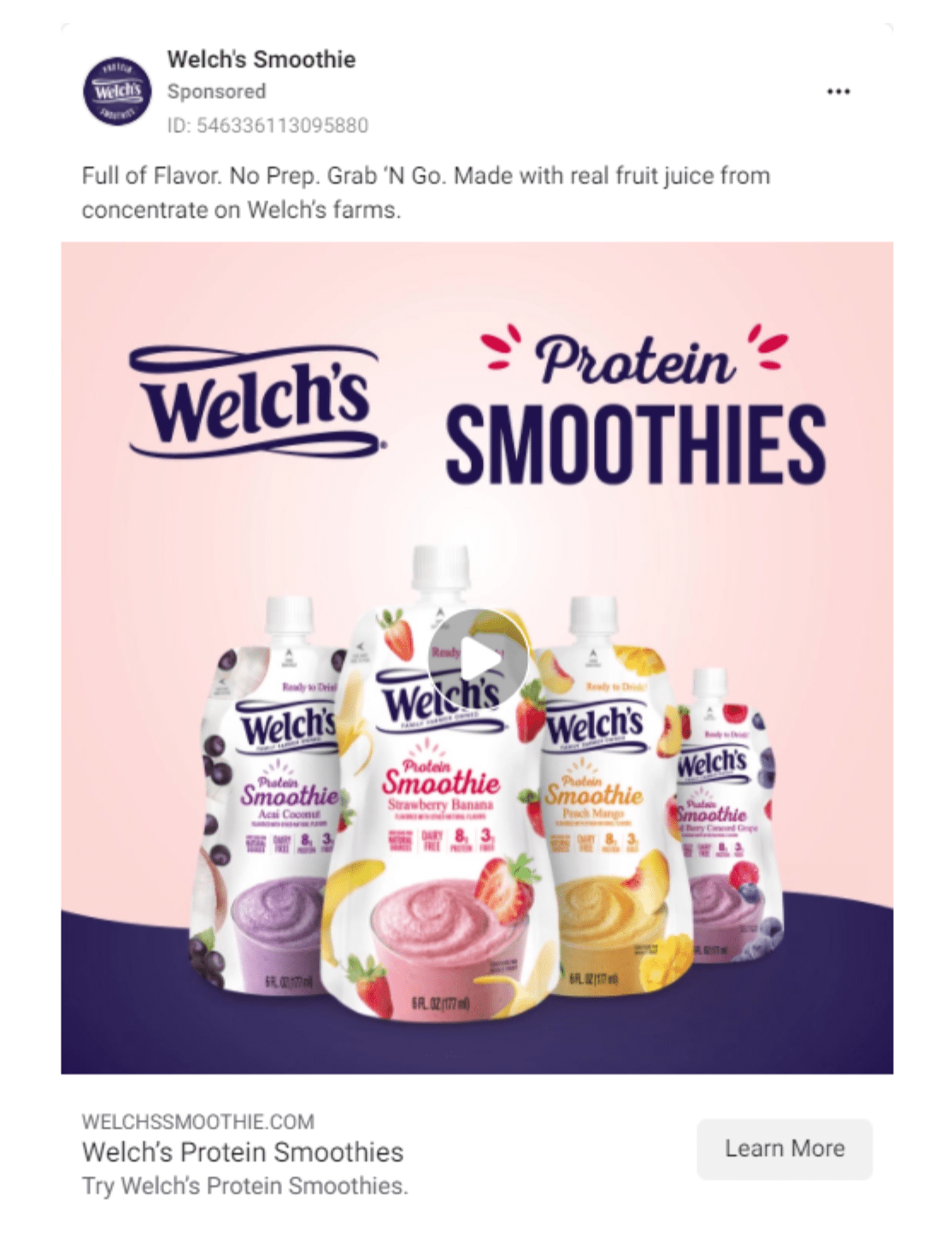
This ad hits the ground running with three benefits—full of flavor, no prep, and grab ‘n’ go. Now you know that this product is aimed at customers who want a quick, flavorful smoothie with no prep, all in just a few sentences.
2. Customize based on funnel phase
Ad viewers can fall on any stage of the conversion funnel, the process your typical lead goes through before they become a customer. Leads closer to the top of the funnel (TOFU) respond better to awareness-related messages. Meanwhile, those near the bottom of the funnel (BOFU) need a final push from your copy to take action.
So, you’ve gotta customize your ad’s copy and call to action according to the intended reader’s funnel stage. If you want to raise awareness for TOFU readers, keep your copy inviting and light. When you have a BOFU ad trying to close a sale, make your copy more intentional with action verbs.
Long story short, your ad copy should match the level of commitment you expect your ad’s audience to have. Look at how K9 Resorts Luxury Pet Hotel uses an inviting tone to encourage TOFU readers to learn more about their services:
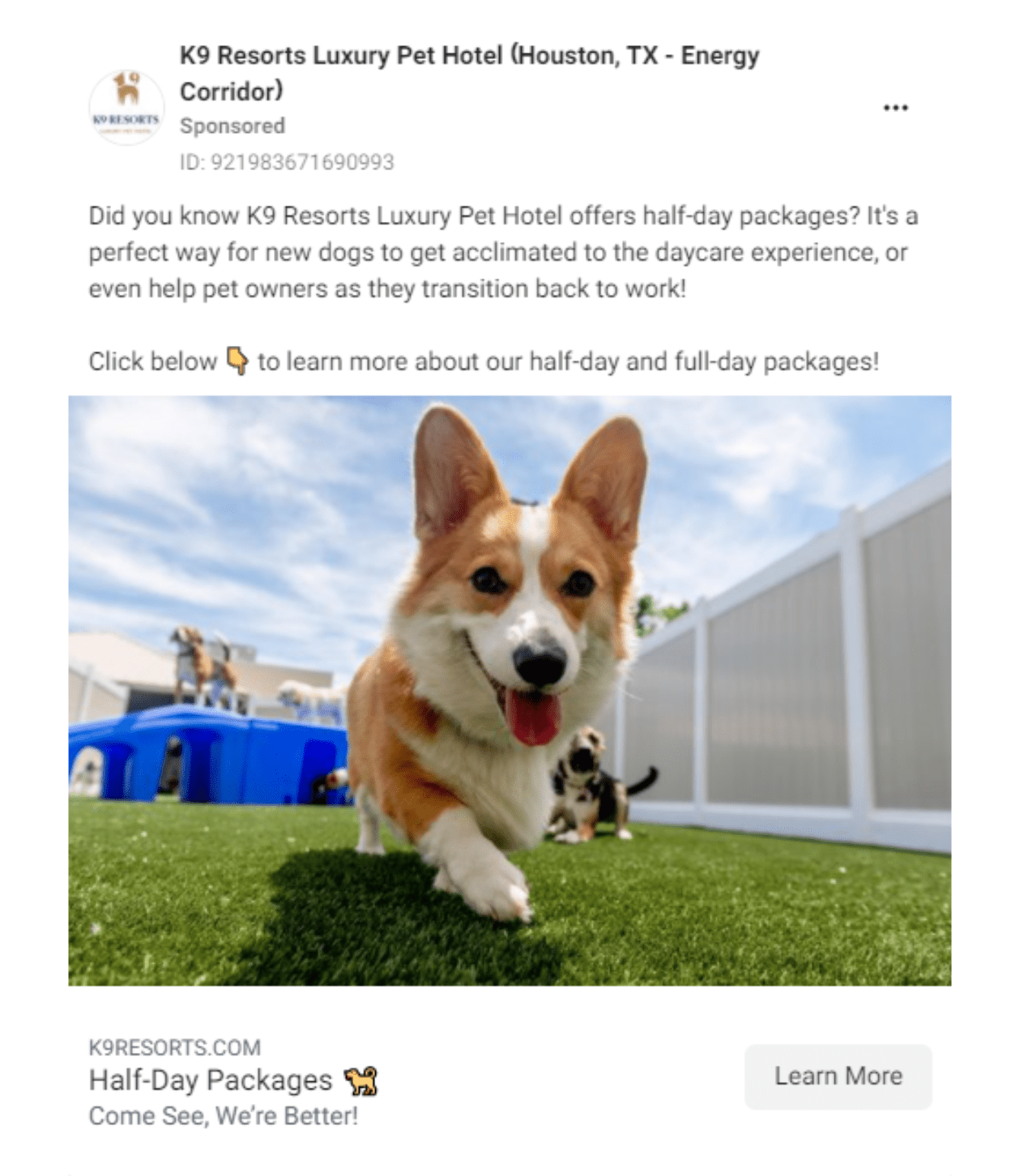
This ad raises awareness about half-day packages and shares the service’s benefits using an informative and welcoming tone (“Did you know…”). It invites visitors who don’t know much about the business to get more information with a TOFU-appropriate CTA.
3. Entice with social proof
Sometimes, the most convincing arguments in copy come from someone else. Social proof—evidence that other customers like your product or service—gives you credibility. Review and testimonial snippets show that other people enjoy what you offer, so viewers can trust that they’ll like it, too.
Try to keep your social proof short and impactful to stay within your ad platform’s character limits. If you need more room, you can try using a copy-focused graphic that showcases support from a customer, like Society Nine:
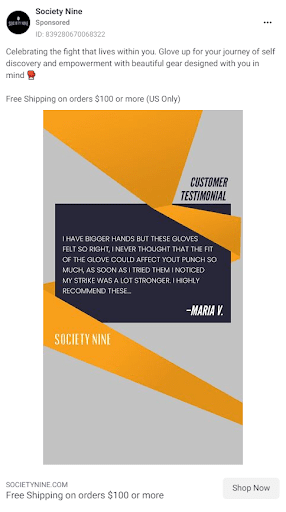
Society Nine uses a testimonial from a customer who noticed they had a stronger punch from their boxing glove. If Maria can get a stronger punch from Society Nine gloves, you can also find that power in yourself. Try linking the rest of your copy to a benefit featured in your social proof like this ad.
4. Line up your ad copy and landing page copy
Your ad copy affects your customer’s journey after they click. If they click through to a landing page that doesn’t match the vibe of your ad, they can get thrown off and leave.
Think how it would feel to click on an elegantly written, posh-feeling ad and see a landing page using super casual language and swear words. You wouldn’t feel like you’re in the right place, huh?
When you keep your tone and language consistent between your ad and landing page, you’ll reduce the friction between ad click and conversion. Your customer has already come so far—you don’t want to lose them right before they take the action you want on your page.
Peep how Phase Two, a coworking space, uses friendly and casual language in both its ad and destination:
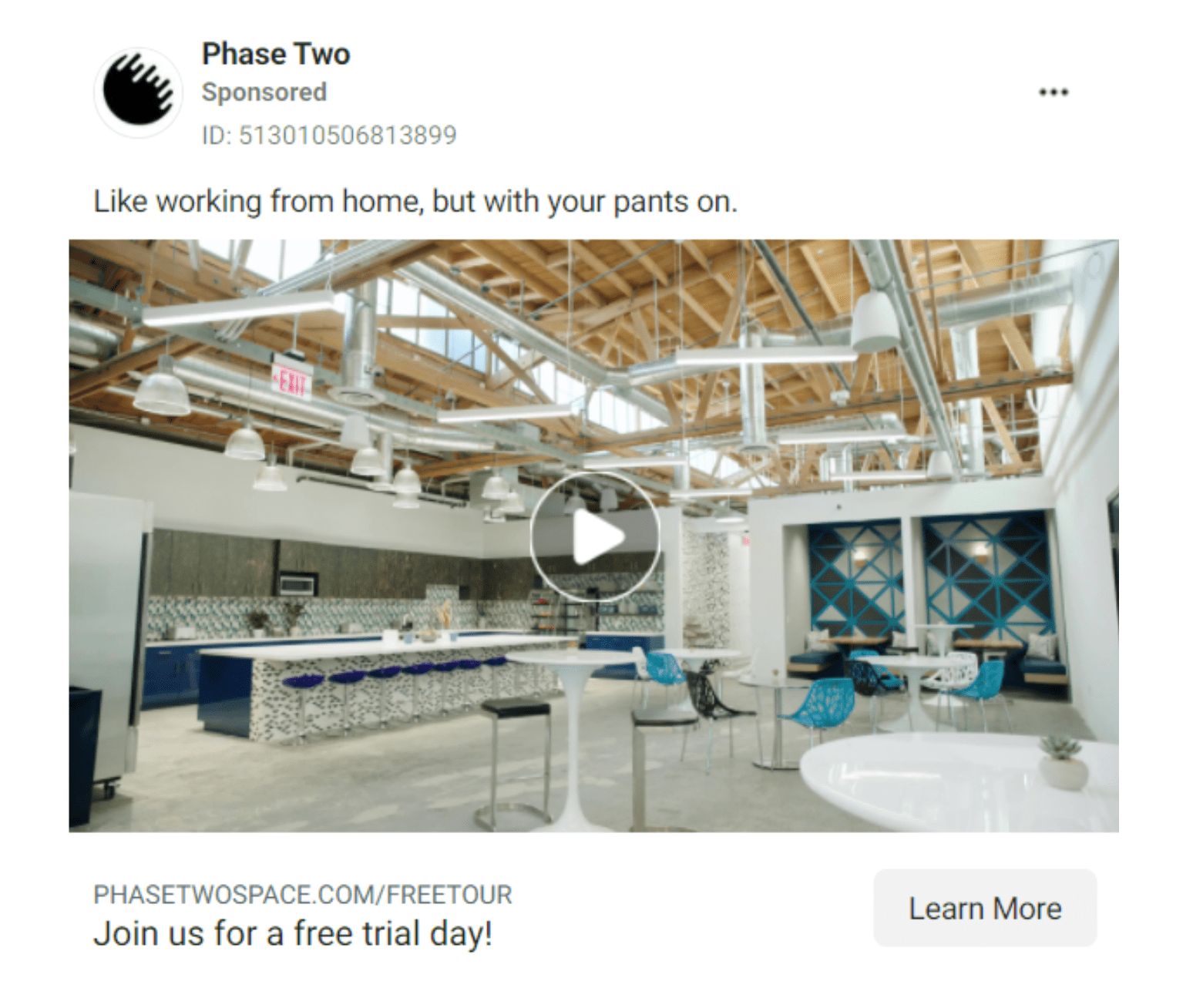
“Like working from home, but with your pants on.” Cheeky and friendly—nice! Let’s see how the destination’s copy compares:

The phrases “Welcome to Your New Office” and “let us grow with you” keep the tone friendly, providing a smooth transition from the ad.
I did wanna note, though, that Phase Two linked directly to their homepage in this case. But, your best bet is to create a conversion-focused landing page for your ad campaign. These pages work like a funnel to keep your visitor going toward the action you want them to take.
Bring It Home With a Killer CTA
Now, for the finishing touch—your call to action (CTA). Choose a powerful phrase that matches the action you want your visitor to take when they click your ad.
Your CTA’s presentation will depend on your ad platform. Facebook and Instagram Ads make you choose a preset CTA button phrase, while you’ll have to put your CTA at the end of your Google Ads copy.
Get to know the best practices for CTAs on your ad platform, then make sure your CTA fits those standards and your goals. You can also pull some inspiration from conversion-focused tactics for landing page CTAs.
If you need some help crafting ad copy, Smart Copy can get you started with optimized suggestions for most major digital ad platforms, from Facebook to Google Ads.

![[Build – MOFU] Smart Copy Product Page – V1](https://unbounce.com/photos/large-SC-Visual-CTA-1.jpg)
